|
SUSTAINABLE DEVELOPMENT ACTION LAB
(Need-driven research, research-driven solutions)
An interdisciplinary approach to research, learning and problem solving by bringing together the three cultures
Natural Sciences, Social Sciences, and Humanities
Nepal Study Center
University of New Mexico
Econ 451: Problem-based Learning Using Data Analytics
(Taking the Classroom into the Field.) [Syllabus]
Department of Economics
Fall 2016 |
Instructor:
Dr. Alok K. Bohara, Professor, Department of Economics
Guest Speakers:
Dr. Jennifer Thacher (Department of Economics, UNM), John Fleck (Water Resources Program, UNM), Dr. Mark Stone (Department of Civil Engineering, UNM), Dan Shaw (Director, Bosque Ecological Monitoring Program-- BEMP)
Graduate student mentors:
Samrat Kunwar (TA), Soumi Roy Chowdhury, Siobhan Yilmaz, Muhammad Adnan Shahid, and Veeshan Rayamajhee (doctoral students)
Undergraduate students:
Biraj Rawal (Engineering), Dianna Spilca (Biology & Political Science) , May Souriyanyong (Economics), DeShawn Vaughan (Economics)
|
A three-part Experiential Learning Course Structure
The lab will contain a three-part learning components. Working with graduate student mentors, the first phase will contain undergraduate students, for example, analyzing the baseline data already collected and/or planned by the NSC: scientific data, household baseline surveys, water and/or air quality data, citizen science data etc. The databases and problems are organized into a few modules. Using the statistical tools and visual methods (including GIS mapping, if necessary) students will identify the problem. Effort will also go into understanding the theoretical underpinning, but with an interdisciplinary and collaborative outlook. After a rigorous assessment of the problem, students offer a practical solution. The solution could be an engineering device, educational awareness protocol, or even IT devices. The final phase of the process takes these designs and/or ideas and proposes a plan for implementation, monitoring, and evaluation. A fund raising strategy can also be a part of this phase. |
1. Project Background
The first part of this action lab is to analyze the problem. In summer of 2016, NSC 's doctoral research team brought data from the field to bear on questions about the water quality of an urban river systems, its public health hazards, and the public policy implications. This problem driven research project is the focus of our action lab, where students will analyze the data and come up with a solution. The target site is the Danda River in the urban town of Siddharthanagar, Lumbini, Nepal.
Read more about the background story: Click here
|
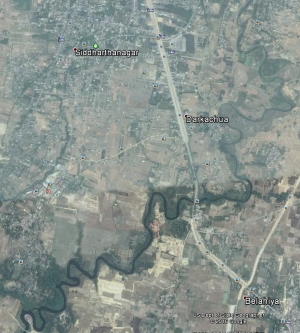
|
|
|
|
2. Project Development
The second part of this lab is to develop a practical project. Preliminary water quality testings across the urban landscape and the field observation clearly showed warning signs indicating that this urban river system was in need for an urgent attention. A three-prong strategy is proposed: monitoring, education, and public policy.
Monitoring: An important goal of this lab course is to establish a scientifically sound river water quality monitoring program: Danda Ecological Monitoring Program (DEMP). This course offers students with hands on training and necessary skills to formulate strategies for the collection, analysis and preparation of long-term water quality data. As such, students will work on developing curriculum, identifying water testing parameters and devising citizen science methods for successful implementation of the DEMP program.
The monitoring component will include the following activities:
Environmental Education: Through an emphasis on the idea that “knowledge is power,” there is a necessity to educate communities about the environmental and social consequences of the scientific data we find. Including awareness campaigns focused on both the community and incorporation into school curricula, a community can begin to take greater ownership in the environment and community well-being, and thus, they will be more interested in demanding cleaner water, air, etc. Women, who are the primary group that interacts with the environment and causes the waste seen (e.g. cooking refuse, washing refuse, etc.), they are going to be a key focus group to target, with increasing awareness campaigns. As they become more empowered through knowledge, they can be makers of change. The issue then becomes how to best communicate the knowledge about environmental hazards and means of protection, and here we will present concrete ideas of how to disseminate the information (i.e. apps, billboards, radio). These methods may even serve as an extension of our work to serve as some sort of intervention which may then be used for a randomized control study (RCT), the outcomes of which will provide solid empirical evidence for policy change.
Public Policy: In this class students will learn about evidence based policy making process. Evidence based policy is a policy that is informed by rigorously established objective evidence. We will discuss and design a game to play with different policy makers in an experimental setting to come up with an evidence for a policy capable of improving the relevant outcomes.
Read more about the project site: Click here
Expected Outcome:
|
 |
|
Classroom Pictures [Econ 451] |
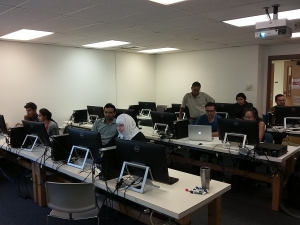 |
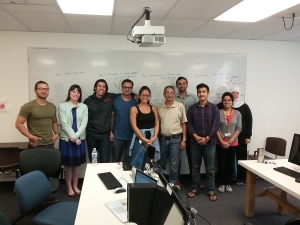
|
| Video of classroom activity [Click here] |
|
Problem-driven Research: Baseline Data Analysis
|
|
The survey protocol included expert interview, focus-group discussions, debriefing, pilot survey and the final survey. In preparation for the survey, we started with expert interviews as a quick way to obtain information on the survey area. The expert interviews were conducted with the ward personnels of Siddharthanagar municipality; and Bagaha and Basantapur VDC s. These interviews played a vital role in redefining the concrete environmental and health issues in and around Danda River; and the survey questions were modified accordingly.
A focus group discussion was also conducted in PNMHI (Pratiman-Neema Memorial Health Institute, Bhairahawa) with representatives from all three VDC’s and municapility. The focus group discussion was conducted on 20 participants that comprised of both male and female participants. The focus group proved valuable in comprehending the problem from an average citizen’s perspective. As with the expert interviews, the survey questions were further modified after focus group discussions. After focus group, the next step undertaken was debriefing one-on-one with few sample respondents. Each respondent went through the survey by reading it aloud to themselves and answered all the questions. We recorded the time taken to complete each question and at the end they provided comments on the survey in general. This process played an important role in helping us understand how potential respondents would see the survey and the complications that could arise.
After the 3 steps mentioned above, the first pre-test survey was conducted on 50 randomly sampled households in five wards of Siddharthanagar; and 3 wards each from Basantapur and Bagaha. We selected 30 households for the municipality and 10 households each for the VDCs. The result from this survey was used to estimate some preliminary result, primarily to understand whether respondents were properly understanding survey questions. While the results did not look too out of ordinary, there were some problems in respondents understanding the choice experiment section for Danda river in the survey. As a result, the survey was slightly modified and another pretest was undertaken with 50 different household samples with the same logistics as the first pretest survey.
After the second pretest survey, the final survey was conducted between June 05 – July 16, 2016 for a total of 752 respondents across Siddharthanagar, Basantapur and Bagaha. The survey was administered in Nepali and Maithili language by 8 college level students that were trained for 3 days in survey techniques. Enumerators used a scripted introduction to assure that each respondent received the same amount of introductory information. The enumerators were also given a GPS device to record the household coordinates of each respondent. Finally, each household that undertook the survey was presented with a detergent powder as a gift for their time.
Survey Design and Methodology:
The survey design was divided into two stages:
Stage 1:
The whole study area is divided in 3 strata in such a way that the sampling units within the stratum are as homogenous as possible and sampling units between strata are as much heterogenous as possible. The three strata consist of Siddharthanaga municipalit, Bagaha VDC and Basantapur VDC. The sampling area consisted of 28 wards that were partially within the Danda catchment area. We stratified the sample by ward to ensure sufficient geographic spread.
Further each stratum is subdivided into number of clusters of wards. There is a total of 28 clusters in the 3 strata, which consists of 14,409 households.
Strata |
Name |
No. of households |
Number of wards |
Number of clusters to be sampled |
No. of households to be sampled |
Over sampling |
1 |
Siddharthanagar municipality |
12,497 |
12 |
12 |
520 |
572* |
2 |
Bagaha VDC |
707 |
8 |
4 |
30 |
90* |
3 |
Basantapur VDC |
1,205 |
8 |
4 |
50 |
90* |
|
Total |
14,409 |
28 |
20 |
600 |
752 |
Stage 2:
The clusters are selected from each stratum with probability proportional to size of households so that the total number of clusters is 20 and households is 600.
In total, we surveyed 752 households for the final survey. Enumerators were instructed to take a random route through the wards, stopping at every 5th house for a total of 5 households per enumerators per day. Furthermore, they were asked to interview only household representatives age 18 or older. If a household declined to take the survey, the enumerators would go to interview the corresponding house.
Survey Map
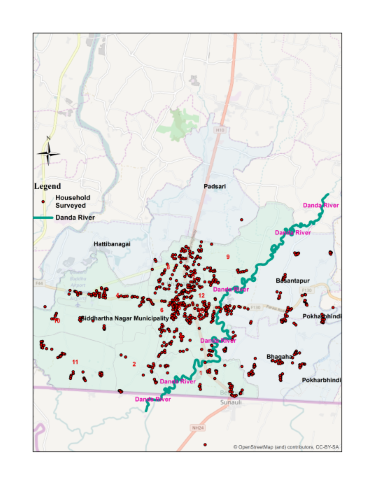
|
|
Module 1: Science of Danda's Water Pollution |
Highlights
1. Of the five water sources tested for water contamination, four are found to be rated as either poor or very poor.
2. Contamination seems to occur all across the urban landscape --city blocks/wards, most exceeding the acceptable level.
3. Of the eight parameters considered -Ammonia, PH, Dissolved Oxygen, Phosphate, Nitrate, Arsenic, Coliform, and Fecal Coliform, most are found to be present except for arsenic.
Background
Creating a sound index for data is a pivotal task for any research that is founded upon the goal of influencing public policy. A strong index must not only meet a certain scientific criterion that validates the data it represents, but it must also convey that same scientific data into a language that can be understood by the individuals who are not scientists or experts in the field. For the Danda River Ecological Monitoring Program (DEMP) a water quality index (WQI) was created using eight parameters that heavily factor into the overall health a water source. Those parameters being: Ammonia, PH, Dissolved Oxygen, Phosphate, Nitrate, Arsenic, Coliform, and Fecal Coliform. Each parameter is weighted in accordance to the level of adverse effects its presence has on water quality. The following equations are the foundation for our WQI: Q(i) = [ V(actual) – V(ideal)/(V(standard) – V(ideal)] *100, where the variables represent the following: Qi – Overall quality rating; VActual – The actual value of the water quality obtained through laboratory analysis; VIdeal – The ideal value of water quality determined through standard tables; VStandard- Recommended World Health Organization standard of water.
Data Analysis
Values between 0 and 49 are considered excellent and safe, 50 and 100 are considered good, and values between 100 to 150 are considered poor with those over 200 considered to be very poor. In examining the data shown briefly below in the corresponding chart on the right, it is evident that the Danda River displays critical values showing poor ratings of its water quality in consideration of the above parameters (pH, Ammonia, PH, Dissolved Oxygen, Phosphate, Nitrate, Arsenic, Coliform, and Fecal Coliform). The chart on the left also shows majority of the water samples fall on the right side of the acceptable threshold. Thus both graphs show that the water pollution is a serious issue for the municipality of Siddharthnagar and the surrounding areas.
Policy Proposition
With this in mind, water quality monitoring programs, policy review and modification, and water quality improvement programs are critical in responding to the current failing trend of the river’s water quality status.
References
Cude, Curtis G. (2001). Oregon water quality index a tool for evaluating water quality management effectiveness : 125-137..
Khwakaram, Ahmad I., Salih N. Majid, and Nzar Y. Hama. (2012). "Determination of water quality index (WQI) for Qalyasan stream in Sulaimani city/Kurdistan region of Iraq." International Journal of Plant, Animal and Environmental Sciences 2.4: 148-157.
|
Module 2: Public Health Implications |
Highlights
1. The data reaffirms multiple negative health concerns spawning from polluted water sources that we previously identified.
2. In Siddharthanagar, ten out of the thirteen observed wards reported at least 10% of their population contracted a waterborne disease.
3. On average, 11.4% of children were infected with some sort of waterborne disease.
4. The World Health Organization reports diarrhea as the most common illness linked to contaminated water. This was reverbirated in our data, diarrhea accounted for close to 50% of all waterborne illnesses reported in all three major regions (WHO 2015).
Background
World: Waterborne diseases are critically apparent in developing countries, accounting for an estimated 24% of the global disease burden and 23% of all deaths among environmental causes of illness. Additionally, 25% of deaths that occur in developing countries are due to environmental factors (WHO, 2006). The pollution in river systems can very well be grouped into environmental causes. As a result, a focus placed on how the environment is set up is imperative, as lack of access to clean drinking supplies and proper methods of hygiene are the largest sources of water contamination and public health illness outbreaks.Water-borne diseases are a pivotal issue in the combat against illness in the developing world, with an estimated 1.1 billion people around the world lacking access to “..’improved drinking water supply’..” and, “..many more drink water that is grossly contaminated (WHO, 2007).”
Nepal: In Nepal specifically, water-borne diseases are noted as one of the major types of disease placing its population at risk, with an estimated disability-adjusted life year value (DALYS) of 18 per 1000 individuals in the nation’s population (Country Profiles of Environmental Burden of Disease, 2009) (See note1). As can be seen in the following graphs, waterborne diseases are greatly distributed and concentrated in numerous regions of the country. Data from select vdc’s and cities have been collected and shown in these graphs as insight into the nation’s water health and quality issue.
Data Analysis
It was found that most people from the population suffered from diarrhea in all three regions. In comparison, more people from Bagaha suffered from diarrhea than in any other regions. Bagaha is an urban VDC with dense population near the Indo-Nepal border. This reason might have an adverse effect on drinking water quality. Secondly, in regards to jaundice, the disease was not seen statistically to be a large issue in all three regions compared with other diseases.
It was found that most children from the population suffered from common waterborne diseases in all three regions. In comparison, more percentage of children from Bagaha suffered from common waterborne diseases than in any other regions. We can conclude that Bagaha, being an urban VDC near the Indo-Nepal border, has an adverse impact on child health.
It was found that most people from ward no.1 in Siddharthanagar suffered from common waterborne diseases compared with any other wards in this region. Siddharthanagar has a landfill site in ward no. 1, which could be one plausible reason why this ward has a higher population affected with common water borne diseases such as diarrhea. Similarly, ward no. 3 from Basantapur, and ward number 8 from Bagaha, have the largest populations of individuals that suffer from common waterborne diseases.
Policy Proposition
Although some solutions are provided to help prevent the cause of waterborne diseases, it is not easily executed. Some preliminary solutions include simply raising awareness. By raising awareness, community involvement can help instill disaster management. For example, getting the waters clean by cleaning excess materials from the water systems would be an efficient way to instill disaster management in regards to public health outbreaks of waterborne illnesses. What is also important is how public education instills students with personal responsibility towards the environment through public health outreach and environmental education programs. Overall, the public should be educated on how to identify if water treatment is used correctly in safeguarding their health and the health of their environment.
Finally, involvement of public health officials is lacking, and a critical plan of action would be to create a governmental plan on a national level to address these issues. A responsible governmental department should be identified to establish legislative content that would allow the cascade of a socioeconomically efficient plan of action in addressing these health and environmental concerns. Institutional and human resources for public health management should be strengthened as well, with the inclusion of a water quality monitoring program both locally and nationally. Lastly and more broadly, establishing a comprehensive national public health structure can lead to contributions to international collaboration (WHO 1999).
Note: 1) The DALYS value represents the loss of an equivalent of one full year of health, a standardized value that the WHO has placed at 0.2 for the lowest rate globally, indicating Nepal greatly exceeds such a value as a result of its exposure to waterborne illness and environmental health risk factors (WHO, 2016).
References
Evidence-based Policy Development: A framework and its Application
Evidence-Based Decision Making When Designing Environments for Physical Activity: The Role of Public Health (2016)
World Health Organization. (2007). Combatting Waterborne Disease at the Household Level.
World Health Organization (2009). Country Profiles of Environmental Burden of Disease: Nepal.
World Health Organization (2016). Disability-adjusted life years (DALYS).
World Health Organization (1999). International Clearing House for Major Chemical Incidents.
World Health Organization (2006). Preventing Disease Through Healthy Environments.
|
| |
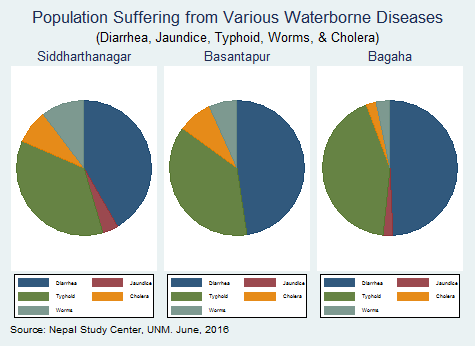
|
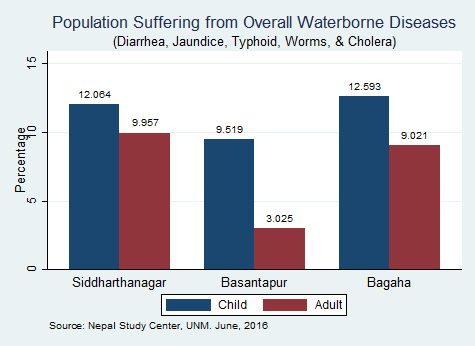
|
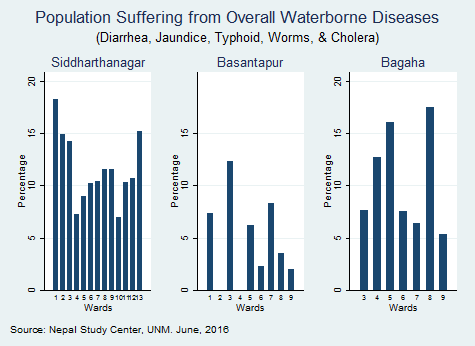
|
Module 3: Water, Sanitation, and Environment |
Highlights
1.In general, there are sanitation methods that need improvement, especially among rural areas.
2.Tube well water is the primary source of drinking water in Bagaha, with 64% of households claiming this as their source, wherein tube well water usage declines as analysis moves into more urban regions.
3.Access to a flushable toilet with a septic tank, is differentially available depending on location, with the highest usage in urban Siddharthanagar with 60% of households having access, compared to 30% in the more rural area of Bagaha.
4. Despite only 20% of Siddharthanagar households being within ten minutes of the river, close to 62% of analyzed wards reported direct dumping of waste into a water source.
Background
World: Globally, access to improved sanitation has risen over the past 20 years, yet nearly 2.4 million individuals still lack access to such facilities (WHO, 2015). As a result, the UN General Assembly has mandated access to clean, safe drinking water and sanitation as a human right. As an outcome there has been an increase in the number of individuals that have access to improved sanitation from 54% to 68%, yet the goal of providing such sanitation to at least half of the world’s population in such disparity has fallen short, as of 2015, by 700 million people (WHO, 2015). As a result of such a disparity, over 300,000 children under the age of five die each year due to diarrhea, a disease related to poor sanitation and inadequate drinking sources (WHO, 2015). As well, countries that lack sources of clean drinking water and sanitation services also have the highest rates of malnutrition, poverty, and disease-related deaths linked to poor sanitation and lack of safe water resources (2015). It comes as no surprise that such a commodity has not only become a human right, but a dire priority among countries worldwide.
Nepal: In a region where only 47% of the total population had access to improved sanitation services as of 2015, it is clear that countries located in Southern Asia such as Nepal are going to be a primary focus of future global action plans to eliminate preventable causes of widespread illness and disease-related deaths such as diarrhea, cholera, and many others (WHO, 2015).
With nearly 14,000 deaths per year are related to unsafe water sources and proper sanitation systems, it is clear that though there has been an increase in the usage of modern latrines and plumbing systems, it has not addressed the issue of safe water practices and implementation of water quality monitoring systems in order to protect local water sources that are used largely across major rural regions of the country (WHO, 2009).
Data Analysis
Across the three major locations located near the Danda River (Siddharthanagar, Basantpur, Bagaha), analysis of sanitation access and sanitation type in relation to water sources is provided in the following sections, with particular focus placed on Siddharthanagar. As a result of urbanization, Siddharthanagar serves as a prime case study in analyzing the relationship between its surrounding ecosystem and the various data related to sanitation access and sanitation type. Due to the important insights to be gained from the highly urbanized Siddharthanagar, this region has also been analyzed at the ward level.
Environment System
Most households in Siddharthanagar do not live near the Danda River, with only about 20% of Siddharthanagar households living ten minutes from the river. The ward in Siddharthanagar that is closest to the river is ward 13 with an average of close to 50% of households living near the river. This is followed by ward 1 and 2 with only about 40% of households living close to the river, according to Fig3A.
Dumping waste directly into the Danda river or a channel was a common practice by eleven of the twenty-two wards analyzed. The nine wards of Bagaha were excluded from this analysis because only one household in all of the wards reported data. In Siddharthanagar, close to 62% of the wards reported direct dumping of waste, and Ward-2 reported more than 15% of the households taking part, as indicated by Fig3B. It should be noted that lack of direct waste dumping into a water source by a particular ward does not necessarily infer higher quality health practices, rather it is likely due more in part to geographic conditions influencing other practices.
Sanitation System
As seen in Fig3C, Siddharthanagar had the most accessibility to a flush-toilet with a septic tank with approximately 60% of the people having access to one. Bagaha had the lowest accessibility with only approximately 30% of the people having access to one. It is important to note that these flush-toilets with a tank are different from flushed toilets that have waste sent directly to the river.
Roadside pickup of waste can be a powerful instrument for a municipality to improve hygiene and environmental health of a region. However, due to the cost of the service it is not often seen in developing countries, and this was reflected in the data shown in Fig3D. Siddharthanagar was the only region where a significant percentage of households in each of its wards had access to this service. In Bagaha and Basantpur, there was only one ward that had more than 10% of its households having this service.
Drinking Water Sources
A tube well is a small-diameter cased well fitted with a cast iron suction hand pump. Tube well water is not considered the safest way of drinking water, as creating appropriate safe distance of tube-wells from sewage-contaminated rivers is difficult and inefficient. Given the outcomes of our data, seen in Fig3E, the high usage of tube well sourced drinking water may prove to be a contributor to poor health outcomes in these regions.
Tube well water is used as the primary source of drinking water by 64% of the population in Bagaha; comparatively this is the highest percentage of people that use tube well water. Also, this percentage is approximately double as compared to Siddharthanagar. Bagaha being a rural area might be one reason why this region has the highest percentage of household using tube well water. The next most commonly used source of water was piped water and only a few households in each region used boring water.
Policy Proposition
Previous analyses on the area has already displayed numerous causes for concern stemming from the pollution of the Danda river and its tributaries. Due to the poor health of the water sources, in addition to the outbreak of waterborne disease, it appears that sanitary and environmental practices of the households in the area may be a key contributor to the adverse health problems being observed.
The most immediate recommendation to come out of these findings is that citizens be educated on the health implications of sanitary practices through various forms of Public Service Announcements (PSA) such as delivery of informal pamphlets and Town Hall meetings. PSA’s offer a cost effective way of informing the populous of potential problems. Households of rural areas should be notified of other modes of waste disposals. These alternatives can provide beneficial effects towards health. In addition, transferring to a flushed toilet with a septic tank or garbage pick up could become a part of a subsidy program to give better incentives to switch or adopt.
References
WHO | Sanitation. (2015). Retrieved October 13, 2016, from http://www.who.int/mediacentre/factsheets/fs392/en/
World Health Organization (2009). Country Profiles of Environmental Burden of Disease: Nepal. https://www.ncbi.nlm.nih.gov/pmc/articles/PMC93023/#B1
US National Library of Medicine (2001). Microbiological Analysis of Tube-Well Water in a Rural Area of Bangladesh
|
Module 4 : Knowledge and Attitude |
Highlights
1. The data suggested that attitude had a positive effect among the inhabitants of all three locations neighboring the Danda River, with a general willingness to provide support for the conservation initiative of the river and its environment. Sidharthangaar reported 32% of households willing to volunteer and 17% willing to pay out of pocket to clean the Danda river, while Basantapur (33% and 18%) and Bagaha (45% and 16%) reported similar numbers. (Fig4L and Fig4M)
2. Education on proper hygiene practices and importance of environmental conservation towards clean water sources is lacking in Nepal. Perception about the responsibility towards environmental conservation is seen by a majority of the communities within the three locations near Danda River as both a governmental and public duty.
3. Education about proper hygiene practices and the importance of environmental conservation towards clean water sources is lacking in developing countries, and this condition is highlighted in locations neighboring the Danda River in Nepal.
4. The residents in all three locations: Siddharthanagar, Bagaha and Basantapur, perceive environmental conservation to be a governmental and public duty.
Background
World:
Among all waterborne diseases, diarrhea is by far the leading cause of illness and illness-related deaths worldwide. The disease is generally defined as, “the passage of three or more loose or liquid stools per day (or more frequent passage than is normal for the individual) (WHO, 2013).” Diarrhea is caused largely by water and food sources contaminated with types of bacteria, viruses, or parasites known to cause the disease, with three forms of the disease categorized under the following time frames and characteristics: acute watery diarrhea (lasting several hours or days and including cholera), acute bloody diarrhea (dysentery), and persistent diarrhea (lasting ≥ 14 days) (WHO, 2013).
Among those suffering from the disease within a population, children by far out shadow adults, with over seven hundred thousand children under five dying from diarrhea-related health implications (WHO, 2013). Globally, 1.7 billion cases of diarrheal disease occur each year, occurring at more acute stages among individuals with compromised immune systems (WHO, 2013).
The greatest paradox is found between the consequences of the disease if left untreated. Thus, simple methods of prevention, with rising rates of diarrhea outbreaks occurring not only in developing countries but in developed countries that had previously less difficulties in controlling such an onset of preventable illness (Pang et al., 2015). Among developed countries, sources of diarrhea outbreak occur primarily among communal contamination (viral, bacterial, or parasitic) of certain food products (meat products such as pork, dairy, and diets high in fructose corn syrup and fructose ingestion) as well as infections that occur in household, clinic, and hospital settings in which proper sanitation procedures have been breached (Achkar, 2012). Among developing countries, a large percentage of diarrhea outbreaks stem from the use of unclean water sources and poor sanitation practices among households across various communities both rural and urban (WHO, 2013).
Nepal : As a developing country, Nepal has seen improvements in its nation’s sanitation facilities and water-drinking sources. Still, diarrhea-related illnesses in Nepal are among the top ten leading causes of death as of 2012 (Nepal, 2015) and leading causes of death among children under five include diarrhea-related illnesses as of 2013 (Nepal, 2015). As mentioned, previous studies have shown that while consistent efforts have been made to increase access to clean water sources and sanitation services within developing countries, the implementation has failed to address the perceptions and attitudes of individuals. Within Nepal, individuals demonstrate a lack of knowledge on the severity of the current water issues and perceive the responsibility of such issues as a duty shared by both the public and local and state government.
Data Analysis
Knowledge: A strong indicator of many environmental issues, public awareness and knowledge has been the cornerstone of any social change related to areas ranging from public health to environmental conservation. Data shown through Fig4A-E in the subsequent charts reveal how education levels mirror their knowledge of overall disease factors. People generally are knowledgeable of the existence of certain diseases (Fig4E), but are not aware of how transmission occurs (Fig4B). For instance, in Basantapur, there is approximately a 30% difference in knowing diarrhea that is caused by contaminated water, and knowledge of the prevention of the disease through treated water.
Attitude: Attitudes towards public health initiatives are critical in any community, as it serves as the motivation behind any programs linked to environmental and health improvement. Across communities near the Danda River, the following data demonstrates not only a general willingness to contribute to programs geared towards the restoration of the Danda River, but a positive commitment towards helping the restoration and volunteer in its restoration process. These can be demonstrated across Fig4I-N across three central locations near the river.
Perception: While habitants in locations around the Danda River are willing to provide both volunteer hours and resources in helping restore the river, many perceive the responsibility should also be shouldered by the Government of Nepal. The data demonstrates the high percentage of inhabitants for each region supporting governmental financial responsibility and support for issues pertaining to environmental conservation, and in turn, public health initiatives such as the restoration of critical sources of water such as the Danda River. Though the perception of inhabitants demonstrates an awareness of pollution issues within the Danda River, it is clear that many perceive it to be less of a threat to public health than reality proves it to be. We can also see that perception of pollution levels in the form of coliform presence is less than half of its true value taken from preliminary water quality monitoring data. This incorrect perception ultimately mirrors the lack of awareness about the current state of the river and its consequences to locations surrounding it.
Policy Recommendations
Recommendations are critical in the following formats:
Education : It is clear that individuals are unaware of the severity of the pollution levels and consequences of such harmful pollutants. To address this issue, programs should be in place that help disseminate such crucial information. Educational programs should be provided at all academic levels and as part of community outreach within each location.
Creation of water quality monitoring programs :
Creation of water quality monitoring programs should be a key solution to restore the quality of the river. Monthly monitoring of the river in order to track issues as well as effectiveness of those monitoring programs should be analyzed periodically.
Citizen Science initiatives: Citizen science programs are essential in bringing communities across all three locations to build a platform of environmental conservation and public health. Initiatives such as those brought by DEMP (Danda Ecological Monitoring Program) can lead the forefront in creating citizen science programs across all academic levels and within the communities to tofoster an efficient and high quality water quality monitoring culture
Implementation policies :
Implementation policies should be put into place in order to instill the importance of acting on the knowledge gained from public health and environmental issues brought by new programs in citizen science, health and environmental education, and water quality monitoring programs. If policies do not push for implementation and action, the same issues can not only return but worsen.
References
Achkar, J. P., MD. (2012, July 24). Diarrhea - Cleveland Clinic. Retrieved November 4, 2016, from http://www.clevelandclinicmeded.com/live/courses/ann/GIReview/2012-pre-syllabus/8-17-Friday/1105_Achkar_Boards_Diarrhea.pdf
Diarrhoeal disease. (2013, April). Retrieved November 4, 2016, from http://www.who.int/mediacentre/factsheets/fs330/en/
Pang, J., Chua, S. J., & Hsu, L. (2015, June 21). Current knowledge, attitude and behaviour of hand and food hygiene in a developed residential community of Singapore: A cross-sectional survey. Retrieved November 4, 2016, from http://bmcpublichealth.biomedcentral.com/articles/10.1186/s12889-015-1910-3
Nepal: WHO statistical profile. (2015, January). Retrieved November 4, 2016, from http://www.who.int/gho/countries/npl.pdf?ua=1
Diarrhoeal disease. (2013, April). Retrieved November 4, 2016, from http://www.who.int/mediacentre/factsheets/fs330/en/
Gibson J. Rigby D., Polya D., Russel N. (April 2015). Discrete Choice Experiments in Developing Countries: Willingness to Pay Versus Willingness to Work.
Highlights
1. Leaving waste roadside is generally considered a safe and effective way of disposing of waste worldwide. In the three locations we observed: The Siddharthanagar region led with 63% of surveyed households having used this method while in Bagaha and Basantapur this method was used in less than 2% of households.
2. In addition, as the method of roadside pickup of waste declines in Bagaha and Basantpur; there is an increase in the percentage of households who bury (14-22% increase from Siddharthanagar) and burn (6-8% increase from Siddharthanagar) their waste.
3. Rates of handwashing everytime after using the toilet indicates that even those respondents with some knowledge of E. Coli contamination and its affects showed higher percentages of handwashing frequency (over 80%), not having any knowledge of the rate or harm of E.Coli in water sources demonstrated a reduced rate of handwashing among respondents (below 80%). Also, rates were low among both those that did and did not have knowledge of E. Coli in their practice of utensil washing at a rate of nearly 65% for both groups.
Background
World: Globally, countless public health intervention and education initiatives have identified poor sanitation, hygiene, and water quality sources as precursors to a wide range of communicable diseases, with a focus on individual behavioral trends as the root of understanding outbreaks of illness and in the tailoring of such mediations. Sanitation efforts and personal hygiene practices such as handwashing, among all other preventive precautions (clean water source, waste management) play a central role in the prevention of such communicable diseases as diarrhea, cholera, and staph infections. Organizations such as the WHO Save Lives: Clean Your Hands Campaign and UNICEF’s WASH initiative demonstrate that simply handwashing with soap can reduce digestional illness outbreaks by more than 40 percent, a significant impact in light of the fact that illnesses due to poor sanitation such as healthcare-associated infections (HAI) have led to the deaths of over four thousand children dying daily within developing countries-a figure equating a plane crashing every hour (Curtis and Cairncross, 2003) (WHO, 2016) (Khan, 2008).
Other significant rates related to the benefits of handwashing include, among many, the reduced incidence rate of acute respiratory infections (ARI’s) by nearly twenty-three percent, severe acute respiratory syndrome (SARS) by fifty-five percent, outbreaks of diarrhea among primary schools and daycare centers by thirty percent, and an increase in newborn survival rates by forty-four percent (Rabie and Curtis, 2006; Jefferson, Del Mar, et al., 2009; Cairncross and Valdmanis, 2006; Ejemot, Ehiri, et al., 2008; Rhee, Mullany, et al., 2008). With such high positive rates associated with proper handwashing practice frequency, it has not changed the low rates of handwashing around the world-a rate between zero and 34 percent at critical moments such as before handling food or after using the toilet (Scott and Rabie, 2003).
Nepal: In Nepal, only 48% of the population had access to a handwashing facility within the home with soap and water (75% within urban areas and 43% within rural areas) as of 2011 (UNICEF, 2015). Evaluation of individual handwashing rates and waste management within Nepal is, therefore, essential in the linkage between the practice and rates of digestional and communicable diseases as seen in previous module findings.
Data Analysis
Disposal Methods:Having a safe and effective way to dispose of waste is a vital element in preserving the environment. Across the three regions: Siddharthanagar (SI), Bagaha (BA), and Basantpur (BS) there are some preliminary reasons for optimism. In Siddharthanagar, 68% of households reported use of a municipality roadside waste pickup system. In addition, all three regions there seem to be an importance placed in composting (a process of turning waste into an organic fertilizer) with the regions reporting 38% (SI), 53% (BA), 56% (BS) of households using this process. However, there also negative elements reported in the data. Despite Siddharthanagar seemingly using a developed waste pickup system, this system seems to disappear in Bagaha (>1%) and Basantapur (2%). All three regions reported <35% of households burying their waste (different from composting). Siddharthnagar reported 42% (Fig5A) of households burning their waste, while Bagaha and Basantapur reported 56% and 64% (Fig5B-C). Based on these reasons, in accordance with the varying percentages of households that are dumping waste directly into a water source; it seems to reinforce the notion that there is both a need for a stronger system of waste disposal and for education on the relation between disposal methods and environmental health.
Water Treatment: Fig 5D represents percentage of population that treats their drinking water in all three locations in Bhairahawa.
As explained in Module 3, tube well and boring water is not considered a safest way of drinking water. We can see from Fig3D that only 8% of people from Siddharthanagar, 4% from Basantapur, and 9% of people from Bagaha treat the tube well or boring water.
In conjunction with the findings from Module 3, Bagaha has the highest percentage of household using tube well water. From Fig5D we can see that only 9% of people from Bagaha treat tube well or boring water.
Drinking water treatment is a helpful measure so as to be prevented from water borne diseases, but majority of the population from all three locations don’t seem treat the water they drink.
Handwashing : According to survey results, handwashing every time after using the toilet indicates that even those respondents with some knowledge of E. Coli contamination and its effects showed higher percentages of handwashing frequency (over 80%), not having any knowledge of the rate or harm of E.Coli in water sources demonstrated a reduced rate of handwashing among respondents (below 80%). In this sense, public awareness of the importance of handwashing and the harmful efffects of poor hygiene practices is vital in the overall rate of handwashing among the population. Furthermore, rates were low among both those that did and did not have knowledge of E. Coli in their practice of utensil washing after eating a meal at a rate of nearly 65% for both groups.
Policy Recommendation
A central focus should be placed on incorporating the population of Nepal in global campaigns promoting handwashing and other sanitation efforts, such as WHO’s Clean Hands Campaign for healthcare professionals, and UNICEF’s Handwashing Day initiative (Khan, 2008). As well, local efforts need to be implemented to disseminate educational resources on safe hygiene practices within schools, community centers, and residential homes. Also, increased efforts in educating the general public on safer waste management techniques and an increase in local, regional, and national enforcement by official waste departments within each location need to be promoted in order to ensure public health safety initiatives are met.
References
25 years: Progress on Sanitation and Drinking Water 2015 Update and MDG Assessment. UNICEF. (2015) Accessed on November 28, 2016 from http://www.wssinfo.org/fileadmin/user_upload/resources/JMP-Update-report-2015_English.pdf
Curtis, V., and S. Cairncross. (2003). “Effect of Washing Hands with Soap on Diarrhea Risk in the Community: A Systematic Review.” Lancet Infectious Diseases 3: 275–81.
Evidence for Hand Hygiene Guidelines. (2016). WHO. Accessed on November 28, 2016 from http://www.who.int/gpsc/tools/faqs/evidence_hand_hygiene/en/
Khan, Saira S. (2008). From Afghanistan to Zimbabwe, millions celebrate first Global Handwashing Day. UNICEF. Accessed November 28, 2016 from https://www.unicef.org/wash/index_45948.html
Save Lives: Clean Your Hands - WHO's global annual call to action for health workers. (2016). WHO. Accessed on November 28, 2016 from http://www.who.int/gpsc/5may/en/.
Rabie, T and Curtis, V. (2006): Handwashing and risk of respiratory infections: a quantitative systematic review. Tropical Medicine and International Health, 11(3), 258-267.
Tom Jefferson, Chris Del Mar, Liz Dooley, Eliana Ferroni, Lubna A Al-Ansary, Ghada A Bawazeer, Mieke L van Driel, Ruth Foxlee, Alessandro Rivetti. (2009). Physical interventions to interrupt or reduce the spread of respiratory viruses: systematic review. BMJ 2009;339:b3675, doi: 10.1136/bmj.b3675 (Published 22 September 2009)
Cairncross, S. Valdmanis V. (2006). Water supply, sanitation and hygiene promotion. Chapter 41. In. Disease Control Priorities in Developing Countries. Second Edition. Edt. Jameson et al 2006. The World Bank. Washington DC: National Institutes of Health.
Cochrane 2008 - Ejemot RI, Ehiri JE, Meremikwu MM, Critchley JA. Hand washing for preventing diarrhoea. Cochrane Database of Systematic Reviews (2008), Issue 1. Art. No.: CD004265. DOI: 10.1002/14651858.CD004265.pub2.
Scott B, Curtis V & Rabie, T. (2003). Protecting children from diarrhoea and acute respiratory infections: the role of handwashing promotion in water and sanitation programmes. WHO Regional Health Forum 7, 42–47.
Victor Rhee; Luke C. Mullany; Subarna K. Khatry; Joanne Katz; Steven C. LeClerq; Gary L. Darmstadt; James M. Tielsch. Maternal and Birth Attendant.Hand Washing and Neonatal Mortality in Southern Nepal Arch Pediatr AdolescMed. (2008);162(7):603-608.
A Brief Final Project Report on
Problem-based Learning Using Data Analytics (Econ 451/551)
With Community Project Recommendations |
Abstract
The pilot concept course (Econ 451/551, Fall 2016) analyzed the field data collected for the urban city of Siddharthanagar and the two surrounding rural VDCs (Basantnagar and Bagaha). Using a series of data analytic modules, the Sustainable Development Lab team of the Nepal Study Center (NSC) of the University of New Mexico (UNM) --faculty instructor, graduate student mentors, and undergraduate students-- came to general conclusion that the households living in the area face poor water quality, suffer from waterborne diseases (e.g., diarrhea, typhoid, cholera), have inadequate sanitation facilities (e.g., flush toilet), have limited access to garbage pick-up system, are less aware of the science behind the waterborne diseases. The multivariate analysis also revealed that the hand-washing behavior seems to be a contributing factor in influencing the incidences of waterborne disease (e.g., diarrhea) among the adults and the children alike. The data also revealed that the people were concerned about the health of the Danda River, and were willing to “help” clean it through personal volunteering and/or public funding.
The team offers the following propositions:
• A long-term scientific data collection program –Danda Ecological Monitoring Program (DEMP) along the line of New Mexico’ Bosque Ecological Monitoring Program (BEMP)
• Environmental and public health awareness programs and campaigns (e.g., hand washing campaign, adult education on public health awareness, Eco-clubs)
• Improvement in solid waste management and sanitation infrastructure.
• Building eco-system services through river conservation (design of a Danda Bio-park Wildlife Refuge, bio-gallery)
Background
The purpose of studying pollution in Bhairahawa and the surrounding VDCs is to illuminate the role it has played in the spread of diseases, like diarrhea and cholera. Social conditions such as poor environmental awareness, hygiene practices and inadequate health knowledge were examined carefully in order to convey to communities in order to make them understand the role these pivotal elements play in a community’s overall health.
Data
In total, 752 households from all three areas (one urban and two rural VDCs) were surveyed using the proportional sampling strategy (see Appendix A of the Full Report for the complete analysis.). The whole study area is divided in 3 strata in such a way that the sampling units within the stratum are as homogenous as possible and sampling units between strata are as much heterogenous as possible. The three strata consist of Siddharthanaga municipality, Bagaha VDC and Basantapur VDC. The sampling area consisted of 28 wards that were partially within the Danda catchment area. We stratified the sample by ward to ensure sufficient geographic spread. Further each stratum is subdivided into number of clusters of wards. There is a total of 28 clusters in the 3 strata, which consists of 14,409 households.
Learning Design and Process
Under the supervision of the main instructor (Professor Alok K. Bohara), the class was developed within the framework of the NSC’s Sustainable Development Lab. A select group of undergraduate students (engineering, biology, and economics) were enrolled in this class, and a group of volunteering graduate students was selected to serve as mentors. The group met twice a week. Using the STATA software, the survey data was cleaned up and were broken into several modules: water quality, health incidences, sanitation infrastructure, knowledge and attitude and behavior. Various visualizations techniques were used to unravel data information. The final module was the multivariate analysis examining the impact on health outcome. Students followed the following processes: 1) weekly literature review and reading, 2) in-class data analysis, 3) writing of the module reports. At each stage, graduate mentors interacted with the undergraduate students to help them with the reading, analysis, and writing. The final produce was uploaded on a dedicated website: At the end, a set of practical solutions was proposed for implementation, perhaps through a study abroad program.
Main Empirical Findings
While analyzing the water quality of Danda River, it is found that the river is highly polluted with the presence of different water pollutants such as Ammonia, PH, Dissolved Oxygen, Phosphate, Nitrate, Arsenic, Coliform, and Fecal Coliform. Thus individuals in proximity to Danda River face a serious issue of water pollution and possible negative health implications. Our data reaffirms that in most of the wards in Siddharthanagar, at least 10% of their population contracted a waterborne disease. Contamination of diseases are also influenced by the behavior and practices of individuals including use of flush toilets, treatment of drinking water, and hand washing behaviors. We see that 40.3% of the households that did not wash their hands after using toilet face a diarrhea outbreak. This rate declined to 16.8% among households that practiced handwashing behavior. Of the other practices, only 8% of people from Siddharthanagar, 4% from Basantapur, and 9% of people from Bagaha treat their drinking water sources. The lack of hygienic practices can be attributed to the low level of knowledge of the households as only 10.1% had heard about different water pollutants such as Ecoli.
RECOMMENDATIONS
a. Scientific Data Collection
At the heart of this project lies the idea of collecting good scientific data (water, air, bio-diversity) and using it to inform the public and policy makers to help them make better decisions. We propose to implement a monitoring program that collects data on a regular basis (monthly and quarterly) on the following four areas:
• Chemical water quality testing: (Nitrate, pH, Dissolved Oxygen, Biochemical Oxygen Demand (BOD), Ammonia, Turbidity, Phosphate, Temperature, Coliform, and E. Coli.)
• Biological assessment Aquatic insects and their larvae (macroinvertebrates) will be trapped, captured, and identified using a Biotic Index (insect key containing the list of pollution sensitive organism).
• Physical landscape assessment: The riparian corridor will be examined for its physical condition (e.g., erosion, inadequate buffer, vegetation, and invasive species).
• Geomorphic assessment: Stream flow can affect the amount of dissolved oxygen, which in turn can impact the animal in the water. The flow (speed) and the volume of water in the river can reflect the changing environment (e.g., climate change).
b. Environmental Education
The citizen science aspect of the proposal recommends getting school students involved in the data collection process. Hands-on practical projects for students will definitely improve the quality of the environmental education, but it also impacts the attitude of the parents and the other household members. Given the empirical finding regarding the impact of hand-washing on the health outcome in the data, for example, the city officials may also benefit by investing in the public awareness campaigns.
c. Sanitation & Hygiene
As observed from our data analysis, people who suffered from common water borne disease were the ones who lacked proper drinking water facility, had improper dumping behavior or similar practices which made them prone to common water borne diseases. The city authorities can use a few policy instruments and regularity measures to influence public behavior (e.g., unlawful dumping), but they can also come up with subsidies and incentive packages to improve sanitation related infrastructure (e.g., levy fees to create a garbage pick system, government subsidies to promote flush toilets). For example, use of ceramic water purifier resulted a 50% drop in diarrheal diseases in Cambodia since its introduction in 2001. It also successfully reduced E. coli by 99.99%. It was created through a joint effort by UNICEF and the Water and Sanitation Program. A similar program can be implemented in Bhairahawa.
d. Public Policy
The most important aspect of this pilot exercise is to promote an evidence-based decision making process. To that end, we believe that the sound scientific data collection program as proposed here – DEMP-- will be extremely valuable. In fact, the proposal outlined in this exercise offers a big picture which attempts to bring all the parties together – scientists, public, and policy makers.
e. Environmental Conservation and Eco-system Services: Bio-park Wildlife Refuge
The city of Siddharthanagar is on the Danda River, which flows through the farmlands, open space, and urban settlements, and goes through one municipality and three or more rural counties. Some segments of the river are pristine and harbor numerous species of birds, reptiles, insects and a healthy riparian ecosystem. In this urban ecosystem the health and wellbeing of the people is interconnected with the riparian ecology and the lifeform it supports. Any loss of biodiversity of this vital river system impacts the eco-tourism and the image of the world heritage site of Lumbini, the birthplace of Buddha. Thus, to promote and ensure a common human-bio interest, we propose for a development of a bio-park wildlife refuge along the Danda River.
|
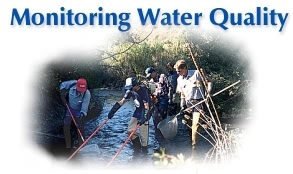
http://www.amrclearinghouse.org/Sub/WATERmonitoring/
|
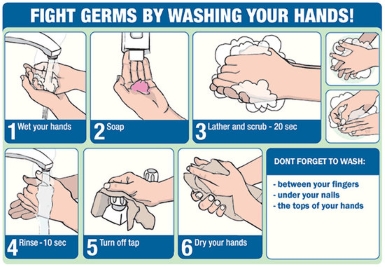
http://www.dailykos.com
|
References
Ballantyne, R., Fien, J., & Packer, J. (2001). Program Effectiveness in Facilitating Intergenerational Influence in Environmental Education: Lessons From the Field. The Journal of Environmental Education, 32(4), 8-15. doi:10.1080/00958960109598657
Chhapola, V., & Brar, R. (2013, August 26). Impact of an educational intervention on hand hygiene compliance and infection rate in a developing country neonatal intensive care unit. International Journal of Nursing Practice, 21(5), 486-492. doi:10.1111/ijn.12283
Knatterud.,G.L., Rockhold, F.W., George, S.L., Barton, F.B., Davis, C.E., Fairweather, W.R., Honohan, T., Mowery, R, O’Neill, R. (1998). Guidelines for quality assurance in multicenter trials: a position paper. Controlled Clinical Trials, 19:477-493.
Luby, S. P., Agboatwalla, M., Painter, J., Altaf, A., Billhimer, W. L., & Hoekstra, R. M. (2004). Effect of Intensive Handwashing Promotion on Childhood Diarrhea in High-Risk Communities in Pakistan. Jama, 291(21), 2547. doi:10.1001/jama.291.21.2547
Luby, S. P., Agboatwalla, M., Feikin, D. R., Painter, J., Billhimer, W., Altaf, A., & Hoekstra, R. M. (2005, July 16). Effect of handwashing on child health: A randomised controlled trial. The Lancet, 366(9481), 225-233. doi:10.1016/s0140-6736(05)66912-7
Most, .M.M., Craddick, S., Crawford, S., Redican, S., Rhodes, D., Rukenbrod, F., Laws, R. (2003). Dietary quality assurance processes of the DASH-Sodium controlled diet study. Journal of the American Dietetic Association, 103(10): 1339-1346.
Sharek, P. J., Benitz, W. E., Abel, N. J., Freeburn, M. J., Mayer, M. L., & Bergman, D. A. (2002). Effect of an Evidence-Based Hand Washing Policy on Hand Washing Rates and False-Positive Coagulase Negative Staphylococcus Blood and Cerebrospinal Fluid Culture Rates in a Level III NICU. Journal of Perinatology, 22(2), 137-143. doi:10.1038/sj.jp.7210661
Vaughan, C., Gack, J., Solorazano, H., & Ray, R. (2003). The Effect of Environmental Education on Schoolchildren, Their Parents, and Community Members: A Study of Intergenerational and Intercommunity Learning. The Journal of Environmental Education,34(3), 12-21. doi:10.1080/00958960309603489
Whitney, C.W., Lind, B.K., Wahl, P.W. (1998). Quality assurance and quality control in longitudinal studies. Epidemiologic Reviews, 20(1): 71-80.
World Health Organization. (2007). Combatting Waterborne Disease at the Household Level.
World Health Organization (2009). Country Profiles of Environmental Burden of Disease: Nepal.
World Health Organization (2016). Disability-adjusted life years (DALYS).
Xuan, L. T., & Hoat, L. N. (2013). Handwashing among schoolchildren in an ethnically diverse population in northern rural Vietnam. Global Health Action, 6(0). doi:10.3402/gha.v6i0.18869
| UPCOMING COURSE OFFERING: FALL 2017 |
Econ 395: Problem-based Learning Using Data Analytics
[pre-requisite: Stat 145]
Limited seating available in the computer lab room.
(Contact: Professor Alok K. Bohara bohara@unm.edu or undergraduate advisor Ms. Meghan Lippert mlippert@unm.edu]
Parish Memorial Library’s Third Annual Fall Lecture Series Presentation (2016)
Taking the Classroom into the Field: An Experiment in Social Sciences [Click here]
|
|
| |
|
 |
|
